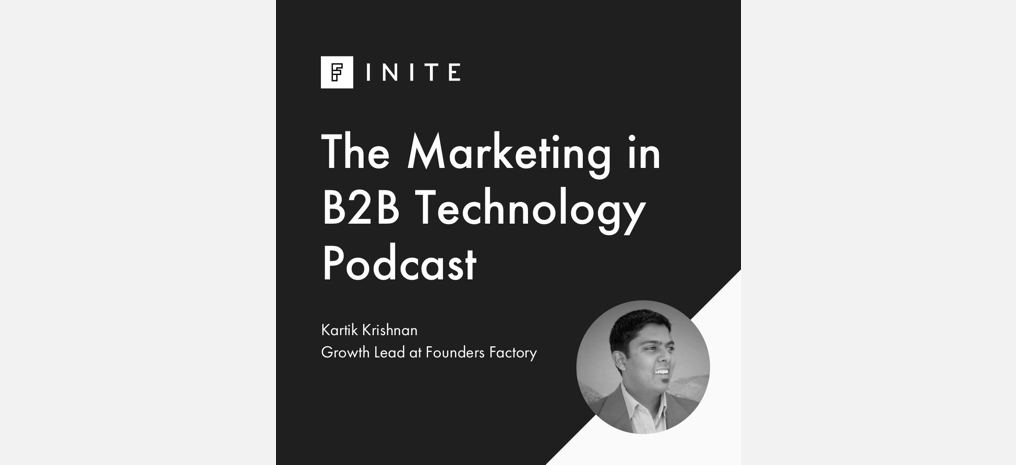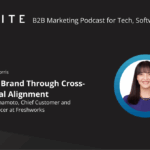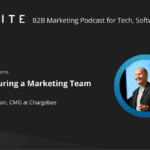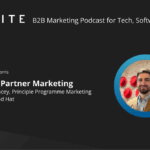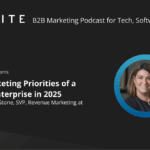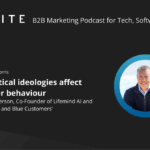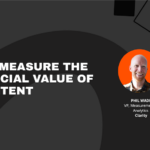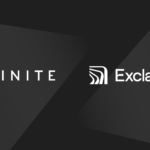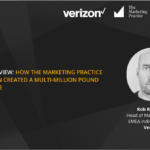Intro:
We started the FINITE podcast in Q1 of 2019, after feedback from our community during our events. Over the last 7 months or so since we began running FINITE events, we have had some quality talks from experienced B2B marketers, and the vision for the podcast is for a wider audience of ambitious B2B marketers to keep up to date with current trends.
Each episode of the FINITE podcast will feature a Senior B2B marketer talking about topics on which they have a deep level of experience, whilst also finding out about their journey to this stage of their careers.
Whether it’s aligning sales and marketing departments, balancing data & creativity or making sense of attribution, all aspects of the FINITE platform is designed for B2B marketers to be able to go back to their place of work, and take actionable insights in their day job.
Listen to the Podcast:
Listen to the episode with Kartik by clicking here.
About Our Guest:
Our very first guest, is Kartik Krishnan, who started his career at Google, managing big PPC budgets for some very large organisations, before heading up demand generation for I.D verification software company Onfido, a number of other Technology businesses and now heads up Growth for Founders Factory. This podcast came about after we saw an article Kartik had written on LinkedIn, which Alex had wanted to develop into this first episode.
Kartik on Founders Factory:
One of the best parts of the job is the cliche of no two days being the same. I love being able to meet different types of businesses, different business models, different types of co-founder, all focused on completely different business areas.
Kartik on his CRM Framework:
It comes from my journey with Onfido, understanding what CRM could do, what it would take to get there, and understanding how marketing automation fits into that. I now deal with a whole range of different size startups. When companies get invested in, they are often asked about their Cost Per Acquisition, which is difficult to quantify in a B2B because you could spend £10-£15 on a lead, but to get the actual quality of lead that you really need, you might need to pay £200-£300 a time, to move that needle along, revenue-wise.
Kartik on aligning Sales & Marketing teams:
I’ve had reasonable success with sitting down with sales and marketing teams, trying to clearly define what a lead is, what is a Marketing Qualified Lead, What is a sales qualified lead, and when does it become an opportunity where it gets handed over to a sales rep.
Being able to sit down with sales, and to tell them, ‘Look, I’m only here to enable you, what kind of leads do you really want?’, is extremely powerful, and underrated. Talking about individual leads will yield much more granular information about the leads they want.
Kartik on the benefits of going analogue:
When you have thousands of contacts in your CRM, that’s when you need all the bells and whistles, and you need marketing automation firing, but only at that stage. In the early days, it’s beneficial to really think about doing things in a more manual way. Then you can see, open up that email, what was the impact of it, learn those efforts in the early stage.
Kartik on starting your own CRM journey:
I’ve walked a few companies through this stage, and there are always overlapping tools so you need to refine your tech set. For example, some companies use Intercom as their CRM, despite it not being a CRM. If you can cull down your potential options, look at G2 for the top tool in that category.
You’ve also got to understand your maximum total amount of potential sales. If your universe of total companies is around 500, then there’s no point you trying to ramp up to get 10,000 leads a year and spending on tech accordingly. So you’re almost looking at a more Sales-CRM focused strategy. For enterprise companies, we use Pipedrive with a bit of MailChimp for companies where even in the long run their universal potential leads are not in the 1,000s. If it’s more than a 1,000 leads and you have a significant marketing team, with an inbound focus creating lots of content, then HubSpot is the one.
Finally, in rare cases where we think that there’s a special use case, IE complex products that won’t sit within the rigid HubSpot framework, we’ll propose Salesforce due to its exceptional customisation.
Kartik on Attribution & managing expectations:
We need to move away from single touch attribution, there is no sale in B2B that happens from one touch point, one Adwords ad.
I have been in the situation of picking and choosing KPIs to a C suite that doesn’t truly understand digital. It’s hard, but times are changing. We all know that paid marketing can bring you all kinds of leads, but I think having granular conversation with sales teams, asking about those leads, naming them and asking what has happened to them, that really opens up a lot of insights, giving you that connectivity with sales, who have a better hold on revenue, which will enable you to create a better story.
You also have to recognise that some sales cycles for SaaS companies can take 6-10 months, so having a CRM where you can log where the lead from 6 months ago originally came from, is invaluable.
Kartik on Campaigns:
Journeys are not instantaneous, as I’ve already mentioned. There are multiple touchpoints and the more you understand these different touchpoints the better for your business. One of the ways to bring these touchpoints together is to run campaigns, that notion of ‘this week we are focusing on these messages’ and we need to push it, and push it properly. We need the workflows in place to push it on email, push it on social, and then we might even have an event around it. Those 3-4 things sit under one campaign.
Then, 10 months down the line, when you’ve closed that big client and everyone is celebrating, it’s because of a combination of work, the event, which needs to be given the credit it’s due, regular emails to keep that lead warm, so now obviously we continue doing all of those things. You have to attribute it all.
Thanks, Kartik!
